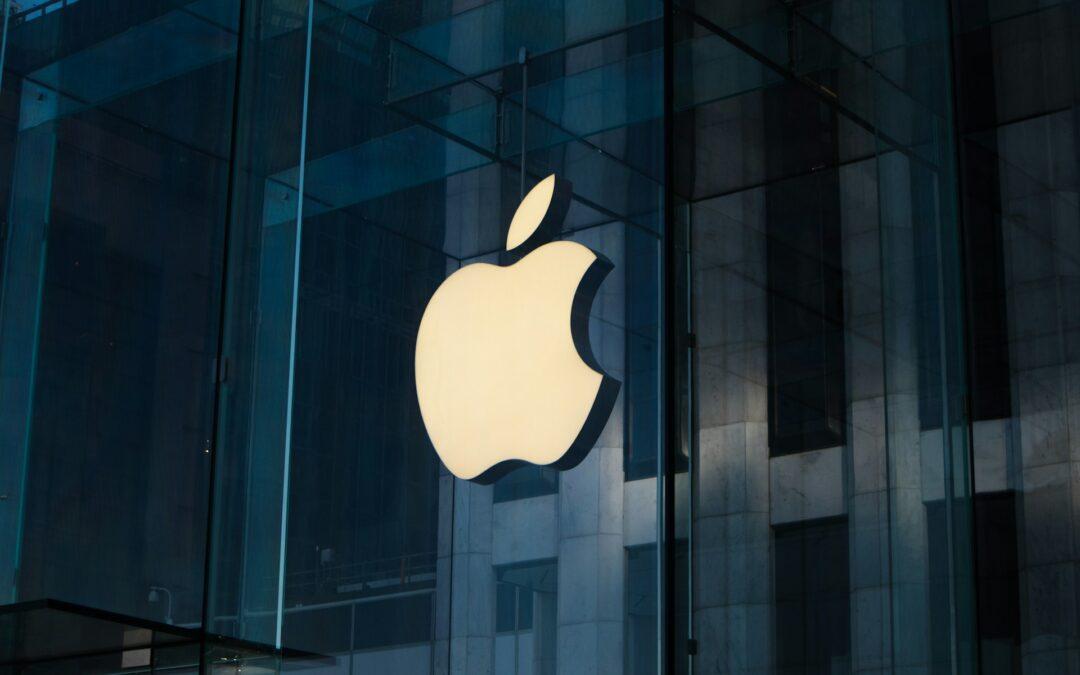In today’s fast-paced world, innovation is not just a bonus; it’s a necessity. The phrase “thinking outside the box” has become a mantra for those looking to push boundaries and create groundbreaking solutions. This concept encourages us to look beyond conventional approaches and explore creative possibilities. Our guide on the 30 top examples of thinking outside the box is designed to inspire and challenge your perception of what’s possible, showcasing a range of ideas and strategies that have redefined industries, solved complex problems, and opened new avenues for growth and creativity.
Each example in our collection serves as a testament to the power of innovative thinking. From revolutionary business models to groundbreaking products and unconventional problem-solving techniques, these stories illustrate how individuals and companies have successfully navigated challenges by venturing into uncharted territory. Whether you’re a budding entrepreneur, a seasoned professional, or simply someone curious about the mechanics of creativity, this guide offers valuable insights into the mindset and approaches that lead to exceptional outcomes. Let’s dive into the world where boundaries are merely starting points, and discover how thinking outside the box can lead to success beyond imagination.
The Best Examples of Thinking Outside the Box
1. Airbnb’s “Rent Your Space” Concept: Before Airbnb, the idea of renting out one’s home to strangers for short stays was unconventional. The founders of Airbnb took this novel concept and turned it into a global phenomenon, fundamentally changing the hospitality industry. By leveraging technology to build trust between hosts and guests, they enabled millions of people to monetize their extra space, while offering travelers a homey, affordable alternative to hotels.
2. Uber’s Ride-Sharing Revolution: Uber transformed the transportation industry by thinking outside the traditional taxi model. Instead of calling a cab, Uber’s app connects riders with drivers using their own cars, offering convenience, competitive pricing, and a seamless user experience. This idea not only created a new economy but also prompted cities and regulatory bodies worldwide to rethink urban transportation.
3. The Ice Hotel in Sweden: In the small village of Jukkasjärvi, Sweden, the first Ice Hotel was crafted entirely out of ice and snow. This unique concept redefines traditional lodging by offering guests the experience of staying in a room that is a work of art and melts back into the river each spring. It’s a prime example of innovative tourism, drawing visitors from around the globe eager for a once-in-a-lifetime experience.
4. Tesla’s Electric Car Ambition: Tesla Motors, under Elon Musk’s vision, accelerated the world’s transition to sustainable energy with high-performance electric cars. By focusing on electric vehicles (EVs) as desirable, luxury items rather than mere eco-friendly alternatives, Tesla changed the automotive industry’s approach to EVs, leading to greater innovation and investment in sustainable transportation technologies.
5. Apple’s iPhone: When Apple introduced the iPhone, it wasn’t just a new phone but a radical rethinking of what a mobile device could be. Apple combined a phone, an iPod, and an internet communicator into one, creating a user-friendly device that revolutionized the tech industry. The iPhone set new standards for mobile computing, spurring a wave of innovation in apps and mobile services.
6. Google’s PageRank Algorithm: In the early days of the internet, search engines struggled with delivering relevant results. Google’s introduction of the PageRank algorithm, which ranked websites based on the number and quality of links to them, was a game-changer. This outside-the-box thinking made Google the world’s leading search engine, transforming how information is organized and accessed online.
7. Spotify’s Streaming Model: Before Spotify, music piracy was rampant, and the industry was in decline. Spotify’s innovative solution was to offer a vast library of music through a legal streaming service, supported by both ads and premium subscriptions. This model provided a win-win solution for artists and listeners, revitalizing the music industry by making it easy and affordable to access music legally.
8. The Cronut®: Chef Dominique Ansel’s invention of the Cronut®, a croissant-doughnut pastry, is a brilliant example of culinary creativity. By merging two beloved pastries into one, Ansel not only created a new food sensation but also sparked a global trend in hybrid foods, showing how thinking outside the box can lead to new forms of delight even in well-trodden industries like baking.
9. Netflix’s Shift to Streaming: Netflix began as a DVD rental service but radically transformed its business model to focus on streaming, foreseeing the digital shift in media consumption. This pivot not only saved the company from obsolescence but also set it on a path to become a leading entertainment provider and producer, fundamentally changing how people access and watch TV shows and movies.
10. The Sharing Economy: The concept of the sharing economy, exemplified by platforms like Airbnb and Uber, is a testament to thinking outside the conventional ownership model. By facilitating the sharing of resources, whether it’s a ride or a place to stay, these platforms have not only created economic opportunities for millions but also prompted a reevaluation of how goods and services can be consumed and provided, leading to more sustainable and efficient use of resources.
11. Square’s Mobile Payment Solution: Square revolutionized small business transactions by enabling anyone with a smartphone or tablet to accept credit card payments. Prior to Square, small vendors, food trucks, and market stallholders struggled with the high costs and complexity of credit card processing. Square’s simple, user-friendly card reader and app democratized payment processing, opening up new opportunities for small and micro-businesses.
12. Duolingo’s Language Learning Gamification: Duolingo transformed language learning by applying gamification, making it fun, accessible, and free. By treating language learning like a game—with levels, points, and rewards—it significantly increased motivation and retention rates among learners. This outside-the-box approach to education has made Duolingo one of the most popular language-learning apps globally.
13. Impossible Foods’ Plant-based Meat: Impossible Foods tackled the environmental and ethical issues associated with meat consumption by creating plant-based products that taste like meat. Their innovative use of heme from soy plants to mimic the flavor and texture of meat is a brilliant example of using science to create sustainable food alternatives, challenging the traditional meat industry.
14. The Ocean Cleanup Project: Faced with the daunting challenge of oceanic plastic pollution, The Ocean Cleanup Project devised a passive system to collect plastic using the natural currents of the oceans. This approach represents a shift from traditional, labor-intensive clean-up efforts to a more efficient, scalable solution to one of the world’s most pressing environmental issues.
15. Kickstarter’s Crowdfunding Model: Kickstarter changed how projects get funded by allowing creators to pitch directly to the public, bypassing traditional financing routes like banks and investors. This model empowered artists, inventors, and entrepreneurs to bring their ideas to life through community support, fostering innovation and democratizing funding.
16. 3D Printing of Prosthetics: The use of 3D printing technology to create affordable prosthetics has revolutionized the medical field, especially in developing countries. This innovative approach allows for custom-fitted, functional prosthetics at a fraction of the cost of traditional methods, improving accessibility and quality of life for amputees around the world.
17. Waze’s Community-driven Navigation: Waze reimagined GPS navigation by integrating real-time traffic data sourced from its users. This community-driven approach provides more accurate and up-to-date information on traffic conditions, road hazards, and police presence, making travel faster and safer. Waze’s model showcases the power of collective data sharing and community engagement in improving everyday services.
18. Slack’s Workplace Communication: Slack transformed internal business communication by consolidating messages, tools, and files into one platform, streamlining workflows and boosting productivity. By moving away from traditional email chains to a more interactive, real-time chat environment, Slack has redefined team collaboration, making it more efficient and integrated.
19. Tesla’s Powerwall for Home Energy Storage: Beyond electric vehicles, Tesla’s Powerwall tackles the challenge of renewable energy storage at home. It allows homeowners to store excess energy generated from solar panels during the day and use it at night, reducing reliance on the grid and leading to a more sustainable energy consumption model.
20. CRISPR Gene Editing: CRISPR-Cas9 technology has introduced a groundbreaking approach to genetic engineering, allowing scientists to edit genes with unprecedented precision, efficiency, and flexibility. This innovation opens new possibilities for treating genetic disorders, improving crops, and even combating infectious diseases, showcasing the extraordinary potential of thinking outside traditional scientific boundaries.
21. Duolingo’s Gamification of Language Learning: Duolingo transformed language learning by integrating game-like elements into its educational software. This approach made learning new languages engaging, accessible, and fun for millions worldwide. By rewarding progress with points, levels, and virtual currencies, Duolingo encourages consistent practice and has significantly impacted how people approach language learning today.
22. Square’s Mobile Payment Revolution: Square revolutionized small business transactions by introducing a compact, portable card reader that transforms smartphones and tablets into payment processing devices. This innovation democratized electronic transactions for small vendors, artists, and entrepreneurs, breaking down the barriers to accepting card payments and expanding opportunities for mobile businesses.
23. The Impossible Burger – Plant-Based Meat: The Impossible Burger represents a breakthrough in food technology by creating plant-based meat that convincingly mimics the taste, texture, and aroma of beef. This innovation not only caters to vegetarians and vegans but also aims to reduce the environmental impact of meat production, demonstrating how thinking outside the box can lead to sustainable solutions for global challenges.
24. Coca-Cola’s Share a Coke Campaign: Coca-Cola’s “Share a Coke” campaign personalized bottles with common names and phrases, transforming the traditional soda bottle into a social phenomenon. This marketing strategy leveraged the power of personalization to create a stronger emotional connection with consumers, leading to increased sales and brand engagement worldwide.
25. Amazon’s Kindle: Amazon’s introduction of the Kindle e-reader marked a pivotal moment in the publishing world, changing how people buy, read, and interact with books. By making thousands of books accessible in one device, Amazon not only made reading more convenient but also helped save countless trees, illustrating the potential for digital innovation to reshape industries and promote sustainability.
26. Crowdfunding Platforms like Kickstarter: Crowdfunding platforms have revolutionized how projects get funded, enabling creators to present their ideas directly to the public for financial support. This model has empowered inventors, artists, and entrepreneurs to bypass traditional funding routes, bringing innovative products and creative projects to life that might otherwise have remained unrealized.
27. Slack’s Reimagining of Workplace Communication: Slack changed the game for team communication by consolidating messages, tools, and files into one intuitive platform. By moving away from traditional email to a more collaborative and transparent system, Slack has facilitated more efficient workflows and transformed the culture of teamwork in companies around the globe.
28. 3D Printing in Medicine: The use of 3D printing technology in medicine, such as printing prosthetic limbs and organs, is a remarkable example of innovative problem-solving. This approach has significantly reduced costs and customization time for prosthetics, offering new hope and possibilities for patients worldwide, showcasing the transformative impact of merging technology with healthcare.
29. Google Earth and Virtual Globetrotting: Google Earth offered an unprecedented way of exploring the world without leaving home. By utilizing satellite imagery to create a virtual globe, Google not only provided a powerful tool for education and discovery but also opened up new possibilities for environmental monitoring, urban planning, and even storytelling through geographic exploration.
30. Solar Roadways: Solar Roadways represents an ambitious project aiming to replace traditional asphalt roads with solar panels that can generate electricity, melt snow, and display traffic warnings directly. Although still in the experimental phase, this idea challenges conventional infrastructure design, promising a future where roads contribute to energy solutions and environmental sustainability.
What is the Outside the Box Thinking Theory?
The theory of thinking outside the box is a metaphorical expression used to describe an approach to problem-solving that diverges from conventional methods. At its core, it involves a creative leap beyond the traditional boundaries of thought, exploring solutions that might initially seem unorthodox or unconventional. This theory posits that to innovate and overcome complex challenges, one must step beyond the confines of established norms and consider perspectives or strategies that are not immediately apparent.
The genesis of this concept is often attributed to puzzles that require a lateral thinking approach, where the solution lies not within the direct application of rules but in an unexpected direction. This framework for thinking has been applied far beyond puzzles, influencing how businesses, educators, and leaders tackle problems that resist straightforward solutions. It’s about seeing beyond the immediate canvas of options, questioning the status quo, and daring to imagine possibilities that haven’t been considered before.
In practical terms, thinking outside the box can involve a variety of strategies, such as redefining the problem itself, drawing analogies from different domains, or breaking the problem down into smaller, more manageable components. It’s a mindset that values curiosity, flexibility, and the willingness to experiment and fail. This theory champions the idea that breakthroughs often come from the margins, from the spaces between rigid structures of thought and practice.
Critically, outside-the-box thinking doesn’t just aim for novelty; it seeks utility and effectiveness. It’s not about being different for the sake of difference but about finding better, more efficient, or more satisfying solutions to the problems we face. In a world that is constantly changing, where new challenges emerge at a rapid pace, the ability to think creatively and adaptively is more than a skill – it’s a necessity.
Yet, for all its emphasis on divergence, outside-the-box thinking also requires a deep understanding of the box itself. Knowing the rules, norms, and conventional wisdom deeply can illuminate why they exist and how they can be transcended or reimagined. This theory, therefore, does not dismiss traditional knowledge but builds upon it, using it as a springboard for innovation.
In essence, the theory of thinking outside the box is a call to intellectual bravery, a challenge to confront the unknown with a spirit of exploration. It’s an invitation to view the world not just as it is but as it could be, fostering a culture where imagination and ingenuity drive progress. As the landscape of global challenges and opportunities evolves, fostering this mindset among the next generation is not just beneficial—it’s imperative.
Importance of Thinking Outside the Box
In an era defined by rapid technological advancements and global interconnectedness, the ability to think outside the box has transitioned from a mere advantageous skill to a critical necessity. This concept, which encourages stepping beyond traditional boundaries and conventional thought processes, holds the key to innovation and problem-solving in today’s complex world. At its core, thinking outside the box is about challenging the status quo and exploring new possibilities without being constrained by existing models or perceptions.
The importance of this approach cannot be overstated, especially in a landscape where industries and technologies evolve at an unprecedented pace. Traditional solutions often fall short when faced with novel challenges or dynamic changes in the market. Here, the ability to think creatively and apply unconventional strategies can lead to breakthroughs that propel businesses, technologies, and even entire societies forward. It’s the difference between merely adapting to change and being a driving force behind it.
Furthermore, thinking outside the box is crucial for fostering innovation. It encourages a mindset that is open to experimentation and failure, both of which are essential components of the creative process. By embracing this mindset, individuals and organizations can push the boundaries of what is possible, leading to the development of new products, services, and methodologies that can redefine the landscape of their respective fields.
In the realm of problem-solving, outside-the-box thinking offers a way to navigate the complexities of modern-day challenges. It allows for the synthesis of diverse perspectives and disciplines, leading to holistic and effective solutions. This interdisciplinary approach is particularly relevant in an age where the challenges we face are increasingly complex and interconnected, requiring solutions that go beyond the confines of any single field or industry.
Moreover, in a competitive environment, the ability to innovate and think creatively is what sets individuals and organizations apart. It is a critical driver of growth and success, enabling them to differentiate themselves and capture the attention of consumers and stakeholders. In essence, thinking outside the box is not just about being different; it’s about being better, smarter, and more forward-thinking.
In conclusion, the significance of thinking outside the box in today’s world cannot be understated. It is the linchpin of innovation, a fundamental approach to problem-solving, and a critical factor for success and growth. As we navigate the challenges and opportunities of the 21st century, fostering this mindset will be essential for anyone looking to make a meaningful impact and drive progress in their field.
The Power of Unconventional Thinking
In the ever-evolving landscape of the modern workplace, the ability to think outside the box has transformed from a mere buzzword into an indispensable skill. This innovative approach to problem-solving and creativity is not just about generating new ideas; it’s about breaking free from the conventional chains that bind our thought processes, enabling a leap into uncharted territories of innovation and progress.
The essence of thinking outside the box lies in viewing challenges from a fresh perspective, one that is unencumbered by the traditional ‘this is how it’s always been done’ mentality. It’s about daring to question the status quo and being open to experimenting with novel solutions. In a world where industries are constantly disrupted by technological advancements and changing consumer demands, the ability to adapt and innovate is crucial. Those who can look beyond the familiar and envisage new possibilities hold the key to driving their organizations forward.
This creative thinking not only fosters innovation but also enhances problem-solving skills. Confronted with a seemingly insurmountable challenge, the conventional thinker may hit a wall, whereas the outside-the-box thinker sees an opportunity to build a ladder. This mindset encourages a proactive approach to obstacles, transforming them into stepping stones rather than stumbling blocks.
Moreover, thinking outside the box cultivates a culture of continuous learning and improvement. It encourages individuals to explore diverse fields, draw on interdisciplinary knowledge, and connect seemingly unrelated dots to spawn groundbreaking ideas. This not only propels personal growth but also enriches the collective intellect of the organization, making it more dynamic and resilient in the face of change.
In the context of teamwork, the infusion of diverse perspectives and unconventional ideas can stimulate creativity, sparking a synergy that elevates the group’s output to new heights. When team members feel empowered to share their unique insights, it nurtures an inclusive environment where innovation thrives. This collective creativity is the lifeblood of any organization seeking to distinguish itself in a competitive market.
Yet, embracing this unconventional approach requires courage and a supportive culture. It demands an environment where failure is seen not as a setback but as a vital step in the journey of discovery. Organizations that celebrate experimentation and learn from their missteps create a fertile ground for innovation. They understand that breakthroughs are often preceded by numerous failed attempts, and it is this perseverance in the face of adversity that paves the way for success.
Recommended Articles

TOP 40 Fire-Related Business Ideas to Start in 2024
When we think about fire, it's often about its dangers or the essential role it plays in our daily lives, from cooking to keeping us warm. Yet,...

Is Apple About to Face Tough Times?
Apple, a paragon of innovation and a titan in the tech industry, stands at a critical crossroad. The fiscal year of 2023 unveiled a stark reality:...

Top 30 Business Ideas Near Highway & Guide
If you're considering starting a business near a highway and are on the hunt for the most profitable ventures, you've come to the right place....

TOP 25 Catering Business Ideas for 2024
If you're looking to start a business in the food industry, exploring catering business ideas for 2024 might be the perfect path for you. The catering world offers a wide range of opportunities, from small, intimate gatherings to large-scale events, allowing for...

30 Types of Clothing Stores – Shop Definitions & Examples
In this article, we have compiled a list of the 30 most common types of clothing stores. At first glance, it might seem that a clothing store is simply a place where clothes are sold, suggesting that there wouldn't be many variations among them. However, the reality...
Most Read
TOP 20 Best Bakery Types to Open in 2024
In 2024, the bakery industry is set to evolve, blending traditional flavors with innovative concepts to meet the ever-changing tastes of consumers. As we navigate through this delicious transformation, aspiring entrepreneurs are presented with an array of bakery...

TOP 50 Easy Food to Sell – Most Profitable Ideas
In this article, we've curated a list of the top 50 easy food ideas for sale, ideal for concession stands, restaurants, bars, small home businesses, and various other venues. These foods are simple to prepare, and their sale isn't overly challenging. Undoubtedly, all...
TOP 25 Extremely New Business Ideas for 2024
As we venture into 2024, the business landscape is buzzing with innovation and new opportunities. The past few years have reshaped consumer needs and technological capabilities, paving the way for a fresh wave of entrepreneurial ideas. In this article, we dive into...
20 Best Autonomous Consumption Examples
Autonomous consumption represents the level of spending that does not change with variations in income. This article delves into 20 of the most illustrative autonomous consumption examples, shedding light on how certain expenses remain consistent regardless of an...
